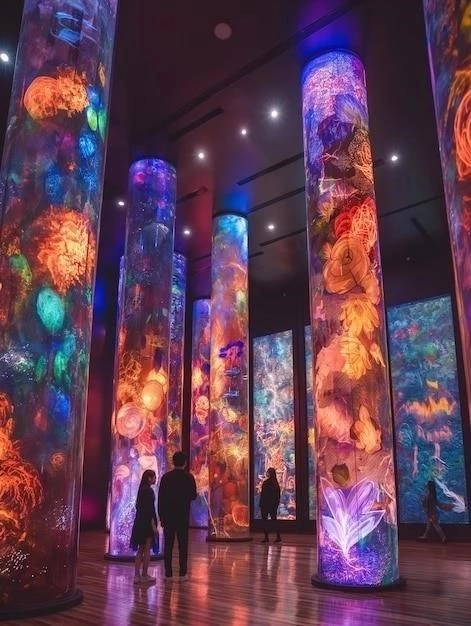Central Park’s Hidden Gems: A Guide to Uncovering the Park’s Best-Kept Secrets
While Central Park stands as a globally recognized landmark, its vast 843 acres conceal a surprising array of hidden treasures. Beyond the bustling crowds drawn to iconic sites like Bethesda Fountain, a world of serene gardens, captivating architectural details, and secluded pathways awaits discovery. This guide serves as your invitation to delve deeper into Central Park’s enchanting landscape, uncovering the lesser-known gems cherished for their tranquility and unique charm.
Secret Gardens and Tranquil Escapes
Amidst the vibrant energy of Central Park’s sprawling landscape lies a collection of secluded gardens, each offering a tranquil respite from the city’s bustling pace. These hidden oases, often overlooked by casual passersby, beckon visitors to escape into serene environments teeming with natural beauty and captivating design.
One such sanctuary is the Conservatory Garden, a six-acre masterpiece tucked away near the park’s northeastern corner. Designed in the grand European tradition, this formal garden unfolds across three distinct styles: the elegant Italian Garden, the romantic French Garden with its central fountain, and the English Garden, a celebration of vibrant blooms.
For those seeking a more intimate escape, the Shakespeare Garden, located near West 81st Street, offers a literary retreat. Here, amidst a tapestry of flowers and foliage mentioned within the Bard’s timeless works, visitors can find solace on quiet benches nestled amidst the fragrant blooms.
Further south, the Hallett Nature Sanctuary, once a neglected woodland, has been revitalized as a four-acre wildlife haven. Accessible only via guided tours, this hidden gem showcases the park’s capacity for ecological restoration, inviting guests to witness the captivating interplay of nature within the heart of the city.
Venturing north, visitors will encounter the serene North Woods, a 90-acre woodland designed to evoke the feeling of an Adirondack forest. Meandering paths wind through this secluded area, leading to picturesque bridges, babbling brooks, and a sense of profound tranquility rarely associated with the bustling metropolis just beyond the trees.
These secret gardens, along with countless other hidden nooks tucked away throughout Central Park, offer a welcome reminder that serenity and natural beauty can be found even within the most urban of environments. They stand as testaments to the park’s enduring power to inspire peace, contemplation, and a profound connection with the natural world.
Unveiling Architectural Wonders and Historical Relics
Beyond its verdant landscapes and tranquil gardens, Central Park stands as an open-air museum of architectural wonders and historical remnants, whispering tales of the park’s rich past and the city’s evolution. These often-overlooked treasures, woven into the park’s fabric, offer a captivating glimpse into a bygone era and the artistry that shaped this iconic landscape.
Nestled amidst the Ramble’s naturalistic landscape, the Ramble Stone Arch, constructed in 1859, stands as a testament to the park’s meticulous design. This rustic arch, seemingly plucked from a European countryside, once served as a passage for carriages traversing the park’s winding paths, its weathered stones whispering tales of a bygone era.

Near the park’s northern edge, the Blockhouse, dating back to the War of 1812, stands as Manhattan’s oldest surviving structure. This unassuming fortress, perched atop a rocky outcrop, once served as a critical defensive position guarding against British invasion. Today, it offers a poignant reminder of the city’s early history, its weathered walls bearing witness to centuries of change.
Tucked away near the Conservatory Garden, the Untermyer Fountain captivates visitors with its intricate bronze sculptures and cascading waters. A gift from prominent lawyer Samuel Untermyer, this masterpiece of early 20th-century design embodies the opulence and artistry characteristic of the Gilded Age.
Scattered throughout the park, numerous cast-iron lampposts, each bearing unique designs and intricate details, illuminate not only the pathways but also a fascinating chapter in the city’s history. These elegant fixtures, once fueled by gaslight, harken back to a time when Central Park served as a beacon of urban sophistication and a testament to the growing metropolis it served.
From grand arches to humble remnants of the past, these architectural gems and historical relics, often unnoticed amidst the park’s bustling activity, offer a tangible connection to Central Park’s layered history and the enduring legacy of artistry woven into its very fabric.
Exploring the Park’s Enchanting Waterfronts and Scenic Trails
Central Park’s enchanting waterfronts and meandering trails offer a tranquil escape from the city’s vibrant energy, inviting visitors to reconnect with nature’s serene embrace. These picturesque pathways, often shrouded in verdant foliage and graced by shimmering waterways, reveal a different facet of the park’s multifaceted character, one defined by tranquility, scenic beauty, and a sense of peaceful exploration.
The Reservoir, a 40-acre expanse of glistening water, beckons runners, walkers, and nature enthusiasts alike. Encircling this iconic water body, a 1.58-mile track, beloved for its scenic vistas and uninterrupted views of the Manhattan skyline, offers a refreshing escape from the city’s frenetic pace.
For those seeking a more intimate waterfront experience, the shores of The Lake, a 22-acre oasis nestled in the park’s heart, beckon with their tranquil charm. Here, amidst weeping willows and graceful swans, visitors can enjoy leisurely rowboat rides, their gentle movements mirrored in the water’s placid surface.
Winding through the park’s northern reaches, the Bridle Path, a picturesque dirt trail originally designed for horseback riding, transports visitors to a bygone era. Canopied by towering trees and punctuated by rustic bridges, this secluded pathway offers a serene escape, its unpaved surface a welcome respite from the city’s concrete jungle.
Along the park’s western edge, the lesser-known Cherry Hill, a verdant knoll overlooking The Lake, offers captivating views of Bethesda Terrace and the distant cityscape. This tranquil spot, particularly enchanting during springtime when its namesake trees burst into bloom, provides a moment of quiet reflection amidst the park’s bustling activity.
These enchanting waterfronts and scenic trails, each offering a unique perspective on Central Park’s diverse landscape, invite exploration and discovery. Whether seeking a moment of peaceful solitude or an invigorating encounter with nature’s beauty, these hidden gems offer a welcome escape from the city’s relentless energy.
Central Park’s Underground Mysteries: Delving into Hidden Tunnels and Chambers

Beneath the verdant expanse of Central Park lies a subterranean network shrouded in mystery and intrigue, a hidden realm of tunnels, chambers, and forgotten passageways whispering tales of the park’s enigmatic past. While much of this underground labyrinth remains inaccessible to the public, its very existence sparks curiosity and invites speculation about the secrets concealed beneath the park’s familiar landscape.
One of the most well-documented subterranean features is the network of tunnels running beneath the 72nd Street Transverse, a bustling roadway that bisects the park. These tunnels, originally constructed to facilitate traffic flow and transport goods beneath the park’s surface, now lay dormant, their echoing silence hinting at a forgotten chapter in the park’s history.
Beneath the majestic Bethesda Terrace, rumors persist of hidden chambers and passageways, remnants of the park’s original design and perhaps even earlier structures that once occupied the site. While access to these areas remains restricted, their presence fuels speculation about the secrets they may hold, adding an air of mystery to this iconic landmark.
Further north, near the Harlem Meer, whispers circulate about a network of drainage tunnels rumored to extend far beyond the park’s boundaries. These subterranean channels, essential to managing the park’s water flow, remain largely unexplored, their depths concealing a hidden world invisible to those strolling above.
While the full extent of Central Park’s underground network may never be fully known, its presence serves as a tantalizing reminder that even the most familiar landscapes can harbor hidden depths. These subterranean mysteries, shrouded in speculation and intrigue, add an extra layer of fascination to this iconic park, inviting us to ponder the secrets that lie beneath its verdant surface.
Off-the-Beaten-Path Experiences: From Whimsical Gardens to Eerie Caves

Beyond its iconic landmarks and well-trodden paths, Central Park harbors a collection of off-the-beaten-path experiences, offering intrepid explorers a glimpse of the park’s more whimsical and mysterious side. These hidden gems, often tucked away amidst dense foliage or concealed within the park’s rugged terrain, reward adventurous spirits with a sense of discovery and a touch of enchantment.

Nestled near the park’s northern edge, the Whispering Bench, a curved stone seat positioned near the 102nd Street entrance, holds a captivating acoustic secret. Here, whispered words spoken at one end of the bench mysteriously travel through the stone, becoming audible only to those seated at the opposite end, a testament to both playful design and the intriguing properties of sound.
Hidden amidst the Ramble’s dense woodland, the Cave, a natural grotto formed by massive boulders, evokes a sense of primeval mystery. This secluded spot, once a popular gathering place for 19th-century writers and artists seeking inspiration amidst nature’s embrace, now stands as a tranquil retreat, its shadowy depths whispering tales of a bygone era.
Near the southeast corner of the Reservoir, the Arthur Ross Pinetum, a tranquil grove featuring over a dozen varieties of coniferous trees, offers a contemplative escape. Here, amidst towering pines and graceful spruces, visitors can enjoy the interplay of light and shade, the air fragrant with the scent of evergreen needles.
Tucked away near Belvedere Castle, the Shakespeare Garden’s hidden sundial, accessible by a narrow, winding path, presents a captivating blend of horticulture and astronomy. This living timepiece, its floral design meticulously calibrated to track the sun’s movement, offers a unique perspective on both the natural world and the passage of time.
These off-the-beaten-path experiences, each with its unique charm and allure, invite visitors to explore the unexpected facets of Central Park’s character, uncovering hidden wonders and embracing the element of surprise that lies at the heart of every great adventure.
Beyond the Beaten Path: Discovering the Serene North Woods and Other Secluded Spots
While Central Park’s iconic landmarks draw throngs of visitors, its northern reaches, particularly the serene North Woods, offer a tranquil escape from the bustling crowds. This expansive woodland, spanning 90 acres, embodies the park’s original vision of a naturalistic escape, inviting exploration and offering a sense of secluded tranquility rarely found within the bustling metropolis.
Entering the North Woods, one is immediately enveloped by a sense of peaceful seclusion. Towering trees, their branches forming a verdant canopy overhead, filter the sunlight, creating an ethereal, almost cathedral-like atmosphere. Winding paths, carpeted in soft pine needles, beckon visitors deeper into this tranquil realm, promising moments of quiet contemplation and a chance to reconnect with nature’s rhythms.
Amidst the woodland’s gentle slopes and rocky outcrops, hidden streams meander, their waters cascading over moss-covered stones, their soothing melodies adding to the symphony of natural sounds. Rustic bridges, spanning these babbling waterways, offer picturesque vantage points, inviting quiet reflection and a moment to appreciate the delicate beauty of the surrounding landscape.
The North Woods serves as a haven for a surprising array of urban wildlife. Birdwatchers can delight in spotting warblers flitting through the branches, while patient observers may glimpse chipmunks darting amongst the undergrowth or turtles basking on sun-drenched rocks. This delicate ecosystem, thriving within the heart of the city, stands as a testament to the park’s enduring power to nurture and sustain life in all its forms.
For those seeking respite from the city’s relentless energy, the North Woods, along with the park’s other secluded spots, offers a sanctuary for the soul. These tranquil havens, often overlooked by casual visitors, reveal a different facet of Central Park’s character, one defined by serenity, natural beauty, and a profound connection to the rhythms of the natural world.










